Reliability-Oriented Design of Inverter-Fed Low-Voltage Electrical Machines: Potential Solutions
Abstract
:1. Introduction
2. Enabling the POF Approach for Inverter-Fed Low-Voltage EMs
2.1. Insulation Stresses Acting on Inverter-Fed Low-Voltage EMs
2.1.1. Thermal Stress
2.1.2. Electrical Stress
2.1.3. Mechanical Stress
2.1.4. Ambient Stress
2.2. The Feasible Lifetime Models
2.3. The Feasibility of Adopting POF for Inverter-Fed Low-Voltage EMs
- The lack of fully understanding the physics of insulation degradation due to the complex operating and environmental conditions and interaction effect of multiple stress;
- The limited wear-out data of EMs compared with power electronics (PE) components.
3. On the Design of PD-Free EMs
3.1. Modelling of Voltage Transient
3.2. Modelling of Partial Discharge
3.3. Experiment-Based Studies on PD
3.3.1. Effect of Ambient Conditions
3.3.2. Effect of Thermal Aging
3.3.3. Investigation on PDEV
3.3.4. Effect of Insulation Thickness and Conductor Diameter
3.3.5. Effect of Surge Voltage Characteristic
3.4. Design of PD-Free EMs
4. Moving towards a Reliability-Oriented Design Approach of EMs
5. Conclusions
Author Contributions
Funding
Data Availability Statement
Conflicts of Interest
References
- Bilgin, B.; Magne, P.; Malysz, P.; Yang, Y.; Pantelic, V.; Preindl, M.; Korobkine, A.; Jiang, W.; Lawford, M.; Emadi, A. Making the Case for Electrified Transportation. IEEE Trans. Transp. Electrif. 2015, 1, 4–17. [Google Scholar] [CrossRef]
- Lukic, M.; Giangrande, P.; Hebala, A.; Nuzzo, S.; Galea, M. Review, challenges, and future developments of electric taxiing systems. IEEE Trans. Transp. Electrif. 2019, 5, 1441–1457. [Google Scholar] [CrossRef]
- Madonna, V. Physics of Failure as a Technology Enabler for Electrical Machines in Transportation: Reliability-Oriented Design of Low Voltage Insulation Systems; University of Nottingham: Nottingham, UK, 2020. [Google Scholar]
- Giangrande, P.; Madonna, V.; Nuzzo, S.; Galea, M. Design of fault-tolerant dual three-phase winding PMSM for helicopter landing gear EMA. In Proceedings of the 2018 IEEE International Conference on Electrical Systems for Aircraft, Railway, Ship Propulsion and Road Vehicles & International Transportation Electrification Conference (ESARS-ITEC), Nottingham, UK, 7–9 November 2018; IEEE: Piscataway Township, NJ, USA, 2018; pp. 1–6. [Google Scholar]
- Lukic, M.; Hebala, A.; Giangrande, P.; Klumpner, C.; Nuzzo, S.; Chen, G.; Gerada, C.; Eastwick, C.; Galea, M. State of the art of electric taxiing systems. In Proceedings of the 2018 IEEE International Conference on Electrical Systems for Aircraft, Railway, Ship Propulsion and Road Vehicles & International Transportation Electrification Conference (ESARS-ITEC), Nottingham, UK, 7–9 November 2018; IEEE: Piscataway Township, NJ, USA, 2018; pp. 1–6. [Google Scholar]
- Galea, M.; Giangrande, P.; Madonna, V.; Buticchi, G. Reliability-Oriented Design of Electrical Machines: The Design Process for Machines′ Insulation Systems MUST Evolve. IEEE Ind. Electron. Mag. 2020, 14, 20–28. [Google Scholar] [CrossRef]
- Giangrande, P.; Madonna, V.; Nuzzo, S.; Galea, M. Moving Toward a Reliability-Oriented Design Approach of Low-Voltage Electrical Machines by Including Insulation Thermal Aging Considerations. IEEE Trans. Transp. Electrif. 2020, 6, 16–27. [Google Scholar] [CrossRef]
- Madonna, V.; Walker, A.; Giangrande, P.; Serra, G.; Gerada, C.; Galea, M. Improved thermal management and analysis for stator end-windings of electrical machines. IEEE Trans. Ind. Electron. 2018, 66, 5057–5069. [Google Scholar] [CrossRef]
- Arumugam, P.; Xu, Z.; La Rocca, A.; Vakil, G.; Dickinson, M.; Amankwah, E.; Hamiti, T.; Bozhko, S.; Gerada, C.; Pickering, S.J. High-speed solid rotor permanent magnet machines: Concept and design. IEEE Trans. Transp. Electrif. 2016, 2, 391–400. [Google Scholar] [CrossRef] [Green Version]
- Moore, B.J.; Rehder, R.H.; Draper, R.E. Utilizing reduced build concepts in the development of insulation systems for large motors. In Proceedings of the Electrical Insulation Conference and Electrical Manufacturing and Coil Winding Conference (Cat. No.99CH37035), Cincinnati, OH, USA, 28 October 1999; pp. 347–352. [Google Scholar]
- Ghassemi, M. High power density technologies for large generators and motors for marine applications with focus on electrical insulation challenges. High. Volt. 2020, 5, 7–14. [Google Scholar] [CrossRef]
- Giangrande, P.; Galassini, A.; Papadopoulos, S.; Al-Timimy, A.; Calzo, G.L.; Degano, M.; Galea, M.; Gerada, C. Considerations on the development of an electric drive for a secondary flight control electromechanical actuator. IEEE Trans. Ind. Appl. 2019, 55, 3544–3554. [Google Scholar] [CrossRef]
- Wang, H.; Liserre, M.; Blaabjerg, F.; de Place Rimmen, P.; Jacobsen, J.B.; Kvisgaard, T.; Landkildehus, J. Transitioning to Physics-of-Failure as a Reliability Driver in Power Electronics. IEEE J. Emerg. Sel. Top. Power Electron. 2014, 2, 97–114. [Google Scholar] [CrossRef]
- Madonna, V.; Migliazza, G.; Giangrande, P.; Lorenzani, E.; Buticchi, G.; Galea, M. The rebirth of the current source inverter: Advantages for aerospace motor design. IEEE Ind. Electron. Mag. 2019, 13, 65–76. [Google Scholar] [CrossRef]
- Höpner, V.N.; Wilhelm, V.E. Insulation Life Span of Low-Voltage Electric Motors—A Survey. Energies 2021, 14, 1738. [Google Scholar] [CrossRef]
- Sang Bin, L.; Tae-June, K.; Heedong, K.; Taesik, K.; Chaewoong, L. Case studies of stator winding turn insulation failures in medium voltage motors. In Proceedings of the 2017 Annual Pulp, Paper And Forest Industries Technical Conference (PPFIC), Tacoma, WA, USA, 18–23 June 2017; pp. 1–8. [Google Scholar]
- Merizalde, Y.; Hernández-Callejo, L.; Duque-Perez, O. State of the art and trends in the monitoring, detection and diagnosis of failures in electric induction motors. Energies 2017, 10, 1056. [Google Scholar] [CrossRef] [Green Version]
- Bazurto, A.J.; Quispe, E.C.; Mendoza, R.C. Causes and Failures classification of industrial electric motor. In Proceedings of the 2016 IEEE Andescon, Arequipa, Peru, 19–21 October 2016; pp. 1–4. [Google Scholar]
- Avallone, E.A.; Baumeister, T., III.; Sadegh, A. Marks’ Standard Handbook for Mechanical Engineers; McGraw-Hill Education: New York, NY, USA, 2007. [Google Scholar]
- Werninck, E.H. Electric Motor Handbook; McGraw-Hill: New York, NY, USA, 1978. [Google Scholar]
- Toliyat, H.A.; Kliman, G.B. Handbook of Electric Motors; CRC Press: Boca Raton, FL, USA, 2004. [Google Scholar]
- International Electrotechnical Commission. Rotating Electrical Machines-Part 18–41: Partial Discharge Free Electrical Insulation Systems (Type I) Used in Rotating Electrical Machines Fed from Voltage Converters—Qualification and Quality Control Tests; IEC Standard: Geneva, Switzerland, 2014. [Google Scholar]
- International Electrotechnical Commission. Electrical Machines-Part 18–42: Partial Discharge Resistant Electrical Insulation Systems (Type II) Used in Rotating Electrical Machines Fed from Voltage Converters-Qualification Tests; IEC: Geneva, Switzerland, 2017. [Google Scholar]
- Sciascera, C.; Giangrande, P.; Brunson, C.; Galea, M.; Gerada, C. Optimal design of an electro-mechanical actuator for aerospace application. In Proceedings of the IECON 2015—41st Annual Conference of the IEEE Industrial Electronics Society, Yokohama, Japan, 9–12 November 2015; IEEE: Piscataway Township, NJ, USA, 2015; pp. 001903–001908. [Google Scholar]
- Giangrande, P.; Madonna, V.; Sala, G.; Kladas, A.; Gerada, C.; Galea, M. Design and testing of PMSM for aerospace EMA applications. In Proceedings of the IECON 2018—44th Annual Conference of the IEEE Industrial Electronics Society, Washington, DC, USA, 21–23 October 2018; IEEE: Piscataway Township, NJ, USA, 2018; pp. 2038–2043. [Google Scholar]
- Cavallini, A.; Fabiani, D.; Montanari, G.C. Power electronics and electrical insulation systems ߝ Part 1: Phenomenology overview. IEEE Electr. Insul. Mag. 2010, 26, 7–15. [Google Scholar] [CrossRef]
- International Electrotechnical Commission. Evaluation and Qualification of Electrical Insulation Systems; IEC: Geneva, Switzerland, 2011. [Google Scholar]
- Stone, G.C.; Boulter, E.A.; Culbert, I.; Dhirani, H. Electrical Insulation for Rotating Machines: Design, Evaluation, Aging, Testing, and Repair; John Wiley & Sons: Hoboken, NJ, USA, 2004; Volume 21. [Google Scholar]
- Cypher, G.A.; Harrington, R. Functional Evaluation of Motor Insulation Systems [includes discussion]. Trans. Am. Inst. Electr. Engineers. Part. III Power Appar. Syst. 1952, 71, 251–253. [Google Scholar] [CrossRef]
- IEEE Standards Association. IEEE Standard Test Procedure for Thermal Evaluation of Systems of Insulating Materials for Random-Wound AC Electric Machinery; IEEE Std 117–2015 (Revision of IEEE Std 117-1974); IEEE Standards Association: Piscataway Township, NJ, USA, 2016; pp. 1–34. [Google Scholar]
- International Electrotechnical Commission. Rotating Electrical Machines-Part 18–21: Functional Evaluation of Insulation Systems—Test Procedures for Wire-Wound Windings—Thermal Evaluation and Classification; International Electrotechnical Commission: Geneva, Switzerland, 2012. [Google Scholar]
- Gyftakis, K.N.; Panagiotou, P.A.; Lophitis, N.; Howey, D.A.; McCulloch, M.D. Breakdown resistance analysis of traction motor winding insulation under thermal ageing. In Proceedings of the 2017 IEEE Energy Conversion Congress and Exposition (ECCE), Cincinnati, OH, USA, 1–5 October 2017; pp. 5819–5825. [Google Scholar]
- Gyftakis, K.N.; Sumislawska, M.; Kavanagh, D.F.; Howey, D.A.; McCulloch, M. Dielectric characteristics of electric vehicle traction motor winding insulation under thermal ageing. In Proceedings of the 2015 IEEE 15th International Conference on Environment and Electrical Engineering (EEEIC), Rome, Italy, 10–13 June 2015; pp. 313–318. [Google Scholar]
- Liu, X.; Zhang, T.; Bai, Y.; Ding, X.; Wang, Y. Effects of accelerated repetitive impulse voltage aging on performance of model stator insulation of wind turbine generator. IEEE Trans. Dielectr. Electr. Insul. 2014, 21, 1506–1515. [Google Scholar] [CrossRef]
- Savin, S.; Ait-Amar, S.; Roger, D. Turn-to-turn capacitance variations correlated to PDIV for AC motors monitoring. IEEE Trans. Dielectr. Electr. Insul. 2013, 20, 34–41. [Google Scholar] [CrossRef]
- Madonna, V.; Giangrande, P.; Galea, M. Evaluation of strand-to-strand capacitance and dissipation factor in thermally aged enamelled coils for low-voltage electrical machines. IET Sci. Meas. Technol. 2019, 13, 1170–1177. [Google Scholar] [CrossRef]
- Farahani, M.; Gockenbach, E.; Borsi, H.; Schäfer, K.; Kaufhold, M. Behavior of machine insulation systems subjected to accelerated thermal aging test. IEEE Trans. Dielectr. Electr. Insul. 2010, 17, 1364–1372. [Google Scholar] [CrossRef]
- Panagiotou, P.A.; Gyftakis, K.N.; Lophitis, N.; McCulloch, M.D.; Howey, D.A. Investigation of traction motor windings′ insulation capacitance at switching frequencies under accelerated thermal stress. In Proceedings of the 2017 IEEE 11th International Symposium on Diagnostics for Electrical Machines, Power Electronics and Drives (SDEMPED), Tinos, Greece, 29 August–1 September 2017; pp. 537–543. [Google Scholar]
- Tsyokhla, I.; Griffo, A.; Wang, J. Online condition monitoring for diagnosis and prognosis of insulation degradation of inverter-fed machines. IEEE Trans. Ind. Electron. 2018, 66, 8126–8135. [Google Scholar] [CrossRef] [Green Version]
- Zoeller, C.; Vogelsberger, M.A.; Fasching, R.; Grubelnik, W.; Wolbank, T.M. Evaluation and Current-Response-Based Identification of Insulation Degradation for High Utilized Electrical Machines in Railway Application. IEEE Trans. Ind. Appl. 2017, 53, 2679–2689. [Google Scholar] [CrossRef]
- Babel, A.S.; Strangas, E.G. Condition-based monitoring and prognostic health management of electric machine stator winding insulation. In Proceedings of the 2014 International Conference on Electrical Machines (ICEM), Berlin, Germany, 2–5 September 2014; IEEE: Piscataway Township, NJ, USA, 2014; pp. 1855–1861. [Google Scholar]
- Savin, S.; Ait-Amar, S.; Roger, D. Cable aging influence on motor diagnostic system. IEEE Trans. Dielectr. Electr. Insul. 2013, 20, 1340–1346. [Google Scholar] [CrossRef]
- Younsi, K.; Neti, P.; Shah, M.; Zhou, J.Y.; Krahn, J.; Weeber, K.; Whitefield, C.D. On-line capacitance and dissipation factor monitoring of AC stator insulation. IEEE Trans. Dielectr. Electr. Insul. 2010, 17, 1441–1452. [Google Scholar] [CrossRef]
- Zoeller, C.; Vogelsberger, M.A.; Wolbank, T.M. Assessment of insulation condition parameters of low-voltage random-wound electrical machine. In Proceedings of the IECON 2016—42nd Annual Conference of the IEEE Industrial Electronics Society, Florence, Italy, 23–26 October 2016; IEEE: Piscataway Township, NJ, USA, 2016; pp. 1470–1475. [Google Scholar]
- Mancinelli, P.; Stagnitta, S.; Cavallini, A. Qualification of Hairpin Motors Insulation for Automotive Applications. IEEE Trans. Ind. Appl. 2017, 53, 3110–3118. [Google Scholar] [CrossRef]
- Han, C. Lifetime evaluation of class E electrical insulation for small induction motors. IEEE Electr. Insul. Mag. 2011, 27, 14–19. [Google Scholar] [CrossRef]
- Sciascera, C.; Galea, M.; Giangrande, P.; Gerada, C. Lifetime consumption and degradation analysis of the winding insulation of electrical machines. In Proceedings of the 8th IET International Conference on Power Electronics, Machines and Drives (PEMD 2016), Glasgow, UK, 19–21 April 2016. [Google Scholar]
- Huang, Z. Modeling and Testing of Insulation Degradation due to Dynamic Thermal Loading of Electrical Machines. Ph.D. Thesis, Lund University, Lund, Sweden, 2017. [Google Scholar]
- Madonna, V.; Giangrande, P.; Lusuardi, L.; Cavallini, A.; Gerada, C.; Galea, M. Thermal Overload and Insulation Aging of Short Duty Cycle, Aerospace Motors. IEEE Trans. Ind. Electron. 2020, 67, 2618–2629. [Google Scholar] [CrossRef]
- International Electrotechnical Commission. Rotating Electrical Machines—Part 18–34: Functional Evaluation of Insulation Systems—Test Procedures for Form-Wound Windings—Evaluation of Thermomechanical Endurance of Insulation Systems; International Electrotechnical Commission: Geneva, Switzerland, 2012. [Google Scholar]
- Institute of Electrical and Electronics Engineers. IEEE Recommended Practice for Thermal Cycle Testing of Form-Wound Stator Bars and Coils for Large Rotating Machines; IEEE Std 1310-2012 (Revision of IEEE Std 1310-1996); IEEE: Piscataway Township, NJ, USA, 2012; pp. 1–30. [Google Scholar]
- Griffo, A.; Tsyokhla, I.; Wang, J. Lifetime of Machines Undergoing Thermal Cycling Stress. In Proceedings of the 2019 IEEE Energy Conversion Congress and Exposition (ECCE), Baltimore, MD, USA, 29 September–3 October 2019; IEEE: Piscataway Township, NJ, USA, 2019; pp. 3831–3836. [Google Scholar]
- Yang, L.; Pauli, F.; Hameyer, K. Influence of thermal-mechanical stress on the insulation system of a low voltage electrical machine. Arch. Electr. Eng. 2021, 70, 233–244. [Google Scholar]
- Lusuardi, L.; Cavallini, A.; de la Calle, M.G.; Martínez-Tarifa, J.M.; Robles, G. Insulation design of low voltage electrical motors fed by PWM inverters. IEEE Electr. Insul. Mag. 2019, 35, 7–15. [Google Scholar] [CrossRef]
- Ghassemi, M. Accelerated insulation aging due to fast, repetitive voltages: A review identifying challenges and future research needs. IEEE Trans. Dielectr. Electr. Insul. 2019, 26, 1558–1568. [Google Scholar] [CrossRef]
- Morya, A.K.; Gardner, M.C.; Anvari, B.; Liu, L.; Yepes, A.G.; Doval-Gandoy, J.; Toliyat, H.A. Wide Bandgap Devices in AC Electric Drives: Opportunities and Challenges. IEEE Trans. Transp. Electrif. 2019, 5, 3–20. [Google Scholar] [CrossRef]
- Cavallini, A.; Montanari, G.C.; Fornasari, L. The Evolution of IEC 60034-18-41 from Technical Specification to Standard: Perspectives for Manufacturers and End Users. In Proceedings of the 2012 IEEE International Power Modulator and High Voltage Conference (IPMHVC), San Diego, CA, USA, 3–7 June 2012; pp. 160–164. [Google Scholar]
- Madonna, V.; Giangrande, P.; Zhao, W.; Zhang, H.; Gerada, C.; Galea, M. On the Design of Partial Discharge-Free Low Voltage Electrical Machines. In Proceedings of the 2019 IEEE International Electric Machines & Drives Conference (IEMDC), San Diego, CA, USA, 12–15 May 2019; pp. 1837–1842. [Google Scholar]
- Kaufhold, M.; Aninger, H.; Berth, M.; Speck, J.; Eberhardt, M. Electrical stress and failure mechanism of the winding insulation in PWM-inverter-fed low-voltage induction motors. IEEE Trans. Ind. Electron. 2000, 47, 396–402. [Google Scholar] [CrossRef]
- Lahoud, N.; Faucher, J.; Malec, D.; Maussion, P. Electrical aging of the insulation of low-voltage machines: Model definition and test with the design of experiments. IEEE Trans. Ind. Electron. 2013, 60, 4147–4155. [Google Scholar] [CrossRef] [Green Version]
- Fabiani, D. Accelerated Degradation of Ac-Motor Winding Insulation due to Voltage Waveforms Generated by Adjustable Speed Drives. Ph.D.’s Thesis, University of Bologna, Bologna, Italy, 2003. [Google Scholar]
- Kaufhold, M.; Borner, G.; Eberhardt, M.; Speck, J. Failure mechanism of the interturn insulation of low voltage electric machines fed by pulse-controlled inverters. IEEE Electr. Insul. Mag. 1996, 12, 9–16. [Google Scholar] [CrossRef]
- Munih, T.; Miljavec, D. A method for accelerated ageing of electric machine insulation. In Proceedings of the 16th International Conference on Mechatronics-Mechatronika 2014, Brno, Czech Republic, 3–5 December 2014; IEEE: Piscataway Township, NJ, USA, 2014; pp. 65–70. [Google Scholar]
- Braslavsky, I.Y.; Metelkov, V.; Valtchev, S.; Esaulkova, D.; Kostylev, A.; Kirillov, A. Some aspects of the reliability increasing of the transport electric drives. In Proceedings of the 2016 IEEE International Power Electronics and Motion Control Conference (PEMC), Varna, Bulgaria, 25–28 September 2016; IEEE: Piscataway Township, NJ, USA, 2016; pp. 706–710. [Google Scholar]
- Pauli, F.; Schröder, M.; Hameyer, K. Design and Evaluation Methodology for Insulation Systems of Low Voltage Drives with Preformed Coils. In Proceedings of the 2019 9th International Electric Drives Production Conference (EDPC), Esslingen, Germany, 3–4 December 2019; IEEE: Piscataway Township, NJ, USA, 2019; pp. 1–7. [Google Scholar]
- Grubic, S.; Aller, J.M.; Lu, B.; Habetler, T.G. A Survey on Testing and Monitoring Methods for Stator Insulation Systems of Low-Voltage Induction Machines Focusing on Turn Insulation Problems. IEEE Trans. Ind. Electron. 2008, 55, 4127–4136. [Google Scholar] [CrossRef] [Green Version]
- ISO 16750-3. Road Vehicles—Environmental Conditions and Testing for Electrical and Electronic Equipment—Part 3: Mechanical Loads; ISO: Geneva, Switzerland, 2012. [Google Scholar]
- Karlsson, A.; Karlsson, T. Estimating Lifetimes for Stator Windings in Hydropower Generators. In Proceedings of the 2006 International Conference on Probabilistic Methods Applied to Power Systems, Stockholm, Sweden, 11–15 June 2006; pp. 1–8. [Google Scholar]
- Montanari, G.C.; Simoni, L. Aging phenomenology and modeling. IEEE Trans. Electr. Insul. 1993, 28, 755–776. [Google Scholar] [CrossRef]
- Kokko, V.I. Electrical ageing in lifetime estimation of hydroelectric generator stator windings. In Proceedings of the The XIX International Conference on Electrical Machines-ICEM 2010, Rome, Italy, 6–8 September 2010; IEEE: Piscataway Township, NJ, USA, 2010; pp. 1–5. [Google Scholar]
- Kielmann, F.; Kaufhold, M. Evaluation analysis of thermal ageing in insulation systems of electrical machines—A historical review. IEEE Trans. Dielectr. Electr. Insul. 2010, 17, 1373–1377. [Google Scholar] [CrossRef]
- Dakin, T.W. Electrical insulation deterioration treated as a chemical rate phenomenon. Trans. Am. Inst. Electr. Eng. 1948, 67, 113–122. [Google Scholar] [CrossRef]
- Simoni, L. A General Approach to the Endurance of Electrical Insulation under Temperature and Voltage. IEEE Trans. Electr. Insul. 1981, EI-16, 277–289. [Google Scholar] [CrossRef]
- Uri, J.B. Life expectancy of electrical machines with variable loads. Proc. IEE Part C Monogr. 1960, 107, 137–144. [Google Scholar]
- Brancato, E.L. Estimation of lifetime expectancies of motors. IEEE Electr. Insul. Mag. 1992, 8, 5–13. [Google Scholar] [CrossRef]
- Busch, R. About the concept of consumed life of electrical machine windings and its application. Eur. Trans. Electr. Power 1998, 8, 105–110. [Google Scholar] [CrossRef]
- De Abreu, J.P.G.; Emanuel, A.E. Induction motor thermal aging caused by voltage distortion and imbalance: Loss of useful life and its estimated cost. IEEE Trans. Ind. Appl. 2002, 38, 12–20. [Google Scholar] [CrossRef]
- Oraee, H. A quantative approach to estimate the life expectancy of motor insulation systems. IEEE Trans. Dielectr. Electr. Insul. 2000, 7, 790–796. [Google Scholar] [CrossRef]
- Gnacinski, P. Windings Temperature and Loss of Life of an Induction Machine Under Voltage Unbalance Combined With Over- or Undervoltages. IEEE Trans. Energy Convers. 2008, 23, 363–371. [Google Scholar] [CrossRef]
- Movahed, S.R.; Mirzamani, S.H.O.; Rajabi, A.; Daneshvar, H. Estimation of insulation life of inverter- fed induction motors. In Proceedings of the 2010 1st Power Electronic & Drive Systems & Technologies Conference (PEDSTC), Tehran, Iran, 17–18 February 2010; pp. 335–339. [Google Scholar]
- Rothe, R.; Hameyer, K. Life expectancy calculation for electric vehicle traction motors regarding dynamic temperature and driving cycles. In Proceedings of the 2011 IEEE International Electric Machines & Drives Conference (IEMDC), Niagara Falls, ON, Canada, 15–18 May 2011; IEEE: Piscataway Township, NJ, USA, 2011; pp. 1306–1309. [Google Scholar]
- Semidey, S.A.; Duan, Y.; Mayor, J.R.; Harley, R.G.; Habetler, T.G. Optimal electromagnetic-thermo-mechanical integrated design candidate search and selection for surface-mount permanent-magnet machines considering load profiles. IEEE Trans. Ind. Appl. 2011, 47, 2460–2468. [Google Scholar] [CrossRef]
- Park, H.; Kwon, Y.; Hwang, S.; Lee, H.; Kwon, T. A study for the estimation of temperature and thermal life of traction motor for commercial HEV. In Proceedings of the 2012 IEEE Vehicle Power and Propulsion Conference, Seoul, Korea, 9–12 October 2012; pp. 160–163. [Google Scholar]
- Buyukdegirmenci, V.T. A Framework for Dynamic Characterization and Short-Term Thermal Capability Assessment of Electric Machines and Inverters in Motor Drives; University of Illinois at Urbana-Champaign: Champaign, IL, USA, 2014. [Google Scholar]
- Semidey, S.; Mayor, J. Design and optimization of SMPM electric machines incorporating direct winding heat exchange. In Proceedings of the 7th IET International Conference on Power Electronics, Machines and Drives, Manchester, UK, 8–10 April 2014. [Google Scholar]
- Qiu, Y.; Zhang, W.; Cao, M.; Feng, Y.; Infield, D. An electro-thermal analysis of a variable-speed doubly-fed induction generator in a wind turbine. Energies 2015, 8, 3386–3402. [Google Scholar] [CrossRef] [Green Version]
- Tshiloz, K.; Smith, A.C.; Mohammed, A.; Djurović, S.; Feehally, T. Real-time insulation lifetime monitoring for motor windings. In Proceedings of the 2016 XXII International Conference on Electrical Machines (ICEM), Lausanne, Switzerland, 4–7 September 2016; pp. 2335–2340. [Google Scholar]
- Zhao, K.; Cheng, L.; Zhang, C.; Nie, D.; Cai, W. Induction motors lifetime expectancy analysis subject to regular voltage fluctuations. In Proceedings of the 2017 IEEE Electrical Power and Energy Conference (EPEC), Saskatoon, SK, Canada, 22–25 October 2017; IEEE: Piscataway Township, NJ, USA, 2017; pp. 1–6. [Google Scholar]
- Kulan, M.C.; Baker, N.J. Life-time characteristics of random wound compressed stator windings under thermal stress. IET Electr. Power Appl. 2019, 13, 1287–1297. [Google Scholar] [CrossRef] [Green Version]
- Kumar, L.; Nadarajan, S.; Vaiyapuri, V.; Gupta, A.; Soong, B.-H.; Nguyen, H.D. Life Estimation of Electrical Machine using Aging Model. In Proceedings of the IECON 2020 The 46th Annual Conference of the IEEE Industrial Electronics Society, Singapore, 18–21 October 2020; IEEE: Piscataway Township, NJ, USA, 2020; pp. 1034–1039. [Google Scholar]
- Huger, D.; Gerling, D. An advanced lifetime prediction method for permanent magnet synchronous machines. In Proceedings of the 2014 International Conference on Electrical Machines (ICEM), Berlin, Germany, 2–5 September 2014; IEEE: Piscataway Township, NJ, USA, 2014; pp. 686–691. [Google Scholar]
- Xuhui, W.; Wei, H.; Tao, F.; Jun, L. Lifetime model research of motor drive system for electric vehicles. In Proceedings of the 2007 International Conference on Electrical Machines and Systems (ICEMS), Seoul, Korea, 8–11 October 2007; pp. 129–132. [Google Scholar]
- Rahnamaei, S.R.; Saghaiannejadesfahani, S.M.; Rashidi, A.; Sohankar, A. Dynamic Thermal Model for Winding Temperature of an SRM in an Integrated Battery Charger Utilized in Electric Vehicles. IEEE Trans. Energy Convers. 2020. [Google Scholar] [CrossRef]
- Huang, Z.; Márquez-Fernández, F.J.; Loayza, Y.; Reinap, A.; Alaküla, M. Dynamic thermal modeling and application of electrical machine in hybrid drives. In Proceedings of the 2014 International Conference on Electrical Machines (ICEM), Berlin, Germany, 2–5 September 2014; IEEE: Piscataway Township, NJ, USA, 2014; pp. 2158–2164. [Google Scholar]
- Wilkins, E. Cumulative damage in fatigue. In Colloquium on Fatigue/Colloque de Fatigue/Kolloquium über Ermüdungsfestigkeit; Springer: Berlin/Heidelberg, Germany, 1956; pp. 321–332. [Google Scholar]
- Da Silva, L.F.M.; Öchsner, A. Modeling of Adhesively Bonded Joints; Springer: Berlin/Heidelberg, Germany, 2008. [Google Scholar]
- Pecht, M.; Dasgupta, A. Physics-of-failure: An approach to reliable product development. In Proceedings of the IEEE 1995 International Integrated Reliability Workshop. Final Report, Lake Tahoe, CA, USA, 22–25 October 1995; pp. 1–4. [Google Scholar]
- Pietrini, G.; Barater, D.; Immovilli, F.; Cavallini, A.; Franceschini, G. Multi-stress lifetime model of the winding insulation of electrical machines. In Proceedings of the 2017 IEEE Workshop on Electrical Machines Design, Control and Diagnosis (WEMDCD), Nottingham, UK, 20–21 April 2017; pp. 268–274. [Google Scholar]
- Madonna, V.; Giangrande, P.; Galea, M. Introducing Physics of Failure Considerations in the Electrical Machines Design. In Proceedings of the 2019 IEEE International Electric Machines & Drives Conference (IEMDC), San Diego, CA, USA, 12–15 May 2019; pp. 2233–2238. [Google Scholar]
- Xu, Z.; Al-Timimy, A.; Degano, M.; Giangrande, P.; Calzo, G.L.; Zhang, H.; Galea, M.; Gerada, C.; Pickering, S.; Xia, L. Thermal management of a permanent magnet motor for an directly coupled pump. In Proceedings of the 2016 XXII International Conference on Electrical Machines (ICEM), Lausanne, Switzerland, 4–7 September 2016; IEEE: Piscataway Township, NJ, USA, 2016; pp. 2738–2744. [Google Scholar]
- Madonna, V.; Giangrande, P.; Gerada, C.; Galea, M. Thermal analysis of fault-tolerant electrical machines for aerospace actuators. IET Electr. Power Appl. 2019, 13, 843–852. [Google Scholar] [CrossRef]
- Boglietti, A.; Cavagnino, A.; Staton, D.; Shanel, M.; Mueller, M.; Mejuto, C. Evolution and Modern Approaches for Thermal Analysis of Electrical Machines. IEEE Trans. Ind. Electron. 2009, 56, 871–882. [Google Scholar] [CrossRef] [Green Version]
- Williamson, S.J.; Wrobel, R.; Yon, J.; Booker, J.D.; Mellor, P.H. Investigation of equivalent stator-winding thermal resistance during insulation system ageing. In Proceedings of the 2017 IEEE 11th International Symposium on Diagnostics for Electrical Machines, Power Electronics and Drives (SDEMPED), Tinos, Greece, 29 August–1 September 2017; pp. 550–556. [Google Scholar]
- Madonna, V.; Giangrande, P.; Galea, M. Influence of Insulation Thermal Aging on the Temperature Assessment in Electrical Machines. IEEE Trans. Energy Convers. 2020, 36, 456–467. [Google Scholar] [CrossRef]
- Madonna, V.; Spagnolo, C.; Giangrande, P.; Galea, M. Improving Performance and Extending Lifetime of PMSMs via Advanced End-Winding Cooling. In Proceedings of the 2020 IEEE 29th International Symposium on Industrial Electronics (ISIE), Delft, The Netherlands, 17–19 June 2020; IEEE: Piscataway Township, NJ, USA, 2020; pp. 319–325. [Google Scholar]
- Lusuardi, L. Towards a Partial Discharge Free Insulation System for the More Electrical Transportation. Ph.D.’s Thesis, Alma Mater Studiorum Università di Bologna, Bologna, Italy, 2020. [Google Scholar]
- Pastura, M.; Nuzzo, S.; Immovilli, F.; Toscani, A.; Rumi, A.; Cavallini, A.; Franceschini, G.; Barater, D. Partial Discharges in Electrical Machines for the More Electric Aircraft—Part I: A Comprehensive Modeling Tool for the Characterization of Electric Drives Based on Fast Switching Semiconductors. IEEE Access 2021, 9, 27109–27121. [Google Scholar] [CrossRef]
- Sundeep, S.; Wang, J.; Griffo, A.; Alvarez-Gonzalez, F. Peak Voltage Stress on Stator Winding in PWM Inverter fed Drives. In Proceedings of the 2020 International Conference on Electrical Machines (ICEM), Gothenburg, Sweden, 23–26 August 2020; pp. 1579–1585. [Google Scholar]
- Taghia, B.; Cougo, B.; Piquet, H.; Malec, D.; Belinger, A.; Carayon, J.-P. Overvoltage at motor terminals in SiC-based PWM drives. Math. Comput. Simul. 2019, 158, 264–280. [Google Scholar] [CrossRef] [Green Version]
- Kilper, M.; Fickel, S.; Naumoski, H.; Hameyer, K. Effects of Fast Switching Semiconductors Operating Variable Speed Low Voltage Machines. In Proceedings of the 2019 9th International Electric Drives Production Conference (EDPC), Esslingen, Germany, 3–4 December 2019; pp. 1–7. [Google Scholar]
- Pietrini, G.; Barater, D.; Concari, C.; Galea, M.; Gerada, C. Closed-form approach for predicting overvoltage transients in cable-fed PWM motor drives for MEA. In Proceedings of the 2016 IEEE Energy Conversion Congress and Exposition (ECCE), Milwaukee, WI, USA, 18–22 September 2016; pp. 1–7. [Google Scholar]
- Iosif, V.; Duchesne, S.; Roger, D. Voltage stress predetermination for long-life design of windings for electric actuators in aircrafts. In Proceedings of the 2015 IEEE Conference on Electrical Insulation and Dielectric Phenomena (CEIDP), Ann Arbor, MI, USA, 18–21 October 2015; pp. 318–321. [Google Scholar]
- Moreira, A.F.; Lipo, T.A.; Venkataramanan, G.; Bernet, S. High frequency modeling for cable and induction motor overvoltage studies in long cable drives. In Proceedings of the Conference Record of the 2001 IEEE Industry Applications Conference. 36th IAS Annual Meeting (Cat. No.01CH37248), Chicago, IL, USA, 30 September–4 October 2001; Volume 3, pp. 1787–1794. [Google Scholar]
- Bidan, P.; Lebey, T.; Montseny, G.; Saint-Michel, J. Transient voltage distribution in inverter fed motor windings: Experimental study and modeling. IEEE Trans. Power Electron. 2001, 16, 92–100. [Google Scholar] [CrossRef]
- Odhano, S.; Giangrande, P.; Bojoi, R.; Gerada, C. Self-commissioning of interior permanent magnet synchronous motor drives with high-frequency current injection. In Proceedings of the 2013 IEEE Energy Conversion Congress and Exposition, Raleigh, NC, USA, 15–20 September 2013; IEEE: Piscataway Township, NJ, USA, 2013; pp. 3852–3859. [Google Scholar]
- Xie, Y.; Zhang, J.; Leonardi, F.; Munoz, A.R.; Degner, M.W.; Liang, F. Voltage Stress Modeling and Measurement for Random-Wound Machine Windings Driven by Inverters. IEEE Trans. Ind. Appl. 2020, 56, 3536–3548. [Google Scholar] [CrossRef]
- Hoffmann, A.; Ponick, B. Method for the Prediction of the Potential Distribution in Electrical Machine Windings under Pulse Voltage Stress. IEEE Trans. Energy Convers. 2020, 36, 1180–1187. [Google Scholar] [CrossRef]
- Xie, Y.; Zhang, J.; Leonardi, F.; Munoz, A.R.; Degner, M.W.; Liang, F. Modeling and Verification of Electrical Stress in Inverter-Driven Electric Machine Windings. IEEE Trans. Ind. Appl. 2019, 55, 5818–5829. [Google Scholar] [CrossRef]
- Mihaila, V.; Duchesne, S.; Roger, D. A simulation method to predict the turn-to-turn voltage spikes in a PWM fed motor winding. IEEE Trans. Dielectr. Electr. Insul. 2011, 18, 1609–1615. [Google Scholar] [CrossRef]
- Madonna, V.; Giangrande, P.; Zhao, W.; Zhang, H.; Gerada, C.; Galea, M. Electrical Machines for the More Electric Aircraft: Partial Discharges Investigation. IEEE Trans. Ind. Appl. 2020, 57, 1389–1398. [Google Scholar] [CrossRef]
- Okubo, H.; Hayakawa, N.; Montanari, G.C. Technical Development on Partial Discharge Measurement and Electrical Insulation Techniques for Low Voltage Motors Driven by Voltage Inverters. IEEE Trans. Dielectr. Electr. Insul. 2007, 14, 1516–1530. [Google Scholar] [CrossRef]
- Mathurin, T.; Duchesne, S.; Parent, G. Assessment of Finite Element Simulation Methodologies for the Use of Paschen’s Law in the Prediction of Partial Discharge Risk in Electrical Windings. IEEE Access 2020, 8, 144557–144564. [Google Scholar] [CrossRef]
- Calle, M.G.D.L.; Martínez-Tarifa, J.M.; Solanilla, Á.M.G.; Robles, G. Uncertainty Sources in the Estimation of the Partial Discharge Inception Voltage in Turn-to-Turn Insulation Systems. IEEE Access 2020, 8, 157510–157519. [Google Scholar] [CrossRef]
- Parent, G.; Rossi, M.; Duchesne, S.; Dular, P. Determination of Partial Discharge Inception Voltage and Location of Partial Discharges by Means of Paschen’s Theory and FEM. IEEE Trans. Magn. 2019, 55, 1–4. [Google Scholar] [CrossRef]
- Benmamas, L.; Teste, P.; Krebs, G.; Odic, E.; Vangraefschepe, F.; Hamiti, T. Contribution to partial discharge analysis in inverter-fed motor windings for automotive application. In Proceedings of the 2017 IEEE Electrical Insulation Conference (EIC), Baltimore, MD, USA, 11–14 June 2017; pp. 348–351. [Google Scholar]
- Rain, P.; Loubeau, F.; Durieux, A.; Strat, F.L.; Fresnet, F. Using motorettes for the experimental and numerical determinations of the PDIV in an electric motor. In Proceedings of the 2016 IEEE International Conference on Dielectrics (ICD), Montpellier, France, 3–7 July 2016; pp. 967–970. [Google Scholar]
- Duchesne, S.; Parent, G.; Moenecley, J.; Roger, D. Prediction of PDIV in motor coils using finite element method. In Proceedings of the 2016 IEEE International Conference on Dielectrics (ICD), Montpellier, France, 3–7 July 2016; pp. 638–641. [Google Scholar]
- Roger, D.; Ait-Amar, S.; Napieralska-Juszczak, E.; Napieralski, P. Proposition for Improving the Design of Motor Windings for Low-Pressure Environment. IEEE Trans. Ind. Appl. 2020, 56, 2491–2499. [Google Scholar] [CrossRef]
- Philippe, C.; David, M.; Yvan, L. Tool to Design the Primary Electrical Insulation System of Low Voltage Rotating Machines Fed by Inverters. In Proceedings of the 2018 IEEE Electrical Insulation Conference (EIC), San Antonio, TX, USA, 17–20 June 2018; pp. 8–13. [Google Scholar]
- Driendl, N.; Pauli, F.; Hameyer, K. Modeling of Partial Discharge Processes in Winding Insulation of Low-Voltage Electrical Machines Supplied by High du/dt Inverters. In Proceedings of the IECON 2019—45th Annual Conference of the IEEE Industrial Electronics Society, Lisbon, Portugal, 14–17 October 2019; pp. 7102–7107. [Google Scholar]
- Montanari, G.C.; Seri, P.; Stone, G. Prospects for increasing supply voltage and design of electrical field rotating machine windings supplied from power electronics. IEEE Electr. Insul. Mag. 2020, 36, 31–38. [Google Scholar] [CrossRef]
- Borghei, M.; Ghassemi, M.; Rodriguez-Serna, J.M.; Albarracin, R. A Finite-Element-Analysis and an Improved Induced Charge Concept for Partial Discharge Modeling. IEEE Trans. Power Deliv. 2020. [Google Scholar] [CrossRef]
- Niemeyer, L. A generalized approach to partial discharge modeling. IEEE Trans. Dielectr. Electr. Insul. 1995, 2, 510–528. [Google Scholar] [CrossRef] [Green Version]
- Wang, Y.; Yi, X.; Wang, Y.; Zhang, X.; Yin, Y.; Han, T.; Haran, K.S. Partial-Discharge-Free Insulation Design of Air-Core Permanent Magnet Synchronous Machine for Aircraft Propulsion. IEEE Trans. Transp. Electrif. 2020. [Google Scholar] [CrossRef]
- Wadhwa, C.L. High Voltage Engineering; New Age International Publishers: New Delhi, India, 2007. [Google Scholar]
- Pedersen, A.; McAllister, I.W.; Crichton, G.C.; Vibholm, S. Formulation of the streamer breakdown criterion and its application to strongly electronegative gases and gas mixtures. Arch. Für Elektrotechnik 1984, 67, 395–402. [Google Scholar] [CrossRef]
- Lusuardi, L.; Cavallini, A. The Problem of Altitude When Qualifying the Insulating System of Actuators for More Electrical Aircraft. In Proceedings of the 2018 IEEE International Conference on Electrical Systems for Aircraft, Railway, Ship Propulsion and Road Vehicles & International Transportation Electrification Conference (ESARS-ITEC), Nottingham, UK, 7–9 November 2018; pp. 1–4. [Google Scholar]
- Lusuardi, L.; Rumi, A.; Cavallini, A.; Barater, D.; Nuzzo, S. Partial Discharge Phenomena in Electrical Machines for the More Electrical Aircraft. Part II: Impact of Reduced Pressures and Wide Bandgap Devices. IEEE Access 2021, 9, 27485–27495. [Google Scholar] [CrossRef]
- Rumi, A.; Cavallini, A.; Marinelli, J. The Impact of Impregnating Resins in Ensuring the Reliability of Inverter-Fed Machines. In Proceedings of the 2020 International Symposium on Electrical Insulating Materials (ISEIM), Tokyo, Japan, 13–17 September 2020; pp. 253–256. [Google Scholar]
- Kaji, T.; Asai, H.; Kojima, H.; Hayakawa, N. Combined Effect of Temperature and Humidity of Magnet-Wires on Partial Discharge Inception Voltage under Inverter-Surge Voltage. In Proceedings of the 2018 IEEE Conference on Electrical Insulation and Dielectric Phenomena (CEIDP), Cancun, Mexico, 21–24 October 2018; pp. 554–557. [Google Scholar]
- Wang, P.; Xu, H.; Wang, J.; Cavallini, A.; Montanari, G.C. Temperature effects on PD statistics and endurance of inverter-fed motor insulation under repetitive square wave voltages. In Proceedings of the 2016 IEEE Electrical Insulation Conference (EIC), Montreal, QC, Canada, 19–22 June 2016; pp. 202–205. [Google Scholar]
- Kaji, T.; Amano, Y.; Asai, H. Analysis of Influence Factors for Partial Discharge Inception Voltage between Magnet-Wires on Rotating Machines; SAE International: Warrendale, PA, USA, 2016. [Google Scholar]
- Lusuardi, L.; Rumi, A.; Neretti, G.; Seri, P.; Cavallini, A. Assessing the severity of partial discharges in aerospace applications. In Proceedings of the 2019 IEEE Conference on Electrical Insulation and Dielectric Phenomena (CEIDP), Richland, WA, USA, 20–23 October 2019; pp. 267–270. [Google Scholar]
- Cavallini, A.; Lusuardi, L.; Meyer, D.R.; Machipeddy, S. Modelling Partial Discharge Inception in magnet wires at different altitudes. In Proceedings of the 2016 IEEE Conference on Electrical Insulation and Dielectric Phenomena (CEIDP), Toronto, ON, Canada, 16–19 October 2016; pp. 449–452. [Google Scholar]
- Wakimoto, T.; Kojima, H.; Hayakawa, N. Measurement and evaluation of partial discharge inception voltage for enameled rectangular wires under AC voltage. IEEE Trans. Dielectr. Electr. Insul. 2016, 23, 3566–3574. [Google Scholar] [CrossRef]
- Fenger, M.; Stone, G.C.; Lloyd, B.A. The impact of humidity on PD inception voltage as a function of rise-time in random wound motors of different designs. In Proceedings of the Annual Report Conference on Electrical Insulation and Dielectric Phenomena, Cancun, Mexico, 20–24 October 2002; pp. 501–505. [Google Scholar]
- Fuerst, M.; Bakran, M. Influence of the PWM Voltage Waveform on Partial Discharge Occurrence in Motor Windings. In Proceedings of the PCIM Europe Digital Days 2020; International Exhibition and Conference for Power Electronics, Intelligent Motion, Renewable Energy and Energy Management, Virtual, Germany, 7–8 July 2020; pp. 1–8. [Google Scholar]
- Wei, Z.; You, H.; Hu, B.; Na, R.; Wang, J. Partial Discharge Behavior on Twisted Pair under Ultra-short Rise Time Square-wave Excitations. In Proceedings of the 2019 IEEE Electrical Insulation Conference (EIC), Calgary, AB, Canada, 16–19 June 2019; pp. 493–496. [Google Scholar]
- Pfeiffer, W.; Paede, M. About the influence of the frequency on the partial discharge characteristics of enamelled wires. In Proceedings of the Proceedings: Electrical Insulation Conference and Electrical Manufacturing and Coil Winding Conference (Cat. No.99CH37035), Cincinnati, OH, USA, 28 October 1999; pp. 485–488. [Google Scholar]
- Montanari, G.C.; Seri, P.; Hebner, R. Type Of Supply Waveform, Partial Discharge Behavior And Life Of Rotating Machine Insulation Systems. In Proceedings of the 2018 IEEE International Power Modulator and High Voltage Conference (IPMHVC), Jackson, WY, USA, 3–7 June 2018; pp. 176–179. [Google Scholar]
- Montanari, G.C.; Seri, P. About the Definition of PDIV and RPDIV in Designing Insulation Systems for Rotating Machines Controlled by Inverters. In Proceedings of the 2018 IEEE Electrical Insulation Conference (EIC), San Antonio, TX, USA, 17–20 June 2018; pp. 554–557. [Google Scholar]
- Rumi, A.; Lusuardi, L.; Cavallini, A.; Pastura, M.; Barater, D.; Nuzzo, S. Partial Discharges in Electrical Machines for the More Electrical Aircraft. Part III: Preventing Partial Discharges. IEEE Access 2021, 9, 30113–30123. [Google Scholar] [CrossRef]
- Meyer, D.R.; Cavallini, A.; Lusuardi, L.; Barater, D.; Pietrini, G.; Soldati, A. Influence of impulse voltage repetition frequency on RPDIV in partial vacuum. IEEE Trans. Dielectr. Electr. Insul. 2018, 25, 873–882. [Google Scholar] [CrossRef]
- Stone, G.; Campbell, S.; Tetreault, S. Inverter-Fed drives: Which motor stators are at risk? IEEE Ind. Appl. Mag. 2000, 6, 17–22. [Google Scholar] [CrossRef]
- Pauli, F.; Driendl, N.; Hameyer, K. Study on Temperature Dependence of Partial Discharge in Low Voltage Traction Drives. In Proceedings of the 2019 IEEE Workshop on Electrical Machines Design, Control and Diagnosis (WEMDCD), Athens, Greece, 22–23 April 2019; pp. 209–214. [Google Scholar]
- Kikuchi, Y.; Murata, T.; Uozumi, Y.; Fukumoto, N.; Nagata, M.; Wakimoto, Y.; Yoshimitsu, T. Effects of ambient humidity and temperature on partial discharge characteristics of conventional and nanocomposite enameled magnet wires. IEEE Trans. Dielectr. Electr. Insul. 2008, 15, 1617–1625. [Google Scholar] [CrossRef]
- Fabiani, D.; Montanari, G.C.; Cavallini, A.; Mazzanti, G. Relation between space charge accumulation and partial discharge activity in enameled wires under PWM-like voltage waveforms. IEEE Trans. Dielectr. Electr. Insul. 2004, 11, 393–405. [Google Scholar] [CrossRef]
- Hammarström, T.J.Å. Partial discharge characteristics within motor insulatioi exposed to multi-level PWM waveforms. IEEE Trans. Dielectr. Electr. Insul. 2018, 25, 559–567. [Google Scholar] [CrossRef]
- Hammarström, T.J.Å. Partial discharge characteristics at ultra-short voltage risetimes. IEEE Trans. Dielectr. Electr. Insul. 2018, 25, 2241–2249. [Google Scholar] [CrossRef]
- Hammarström, T.J.Å. Combination of Adjustable Inverter Level and Voltage Rise Time for Electrical Stress Reduction in PWM Driven Motor Windings. IEEE Electr. Insul. Mag. 2021, 37, 17–26. [Google Scholar] [CrossRef]
- Hayakawa, N.; Okubo, H. Partial discharge characteristics of inverter-fed motor coil samples under ac and surge voltage conditions. IEEE Electr. Insul. Mag. 2005, 21, 5–10. [Google Scholar] [CrossRef]
- Hayakawa, N.; Morikawa, M.; Okubo, H. Partial discharge inception and propagation characteristics of magnet wire for inverter-fed motor under surge voltage application. IEEE Trans. Dielectr. Electr. Insul. 2007, 14, 39–45. [Google Scholar] [CrossRef]
- Wang, P.; Montanari, G.C.; Cavallini, A. Partial Discharge Phenomenology and Induced Aging Behavior in Rotating Machines Controlled by Power Electronics. IEEE Trans. Ind. Electron. 2014, 61, 7105–7112. [Google Scholar] [CrossRef]
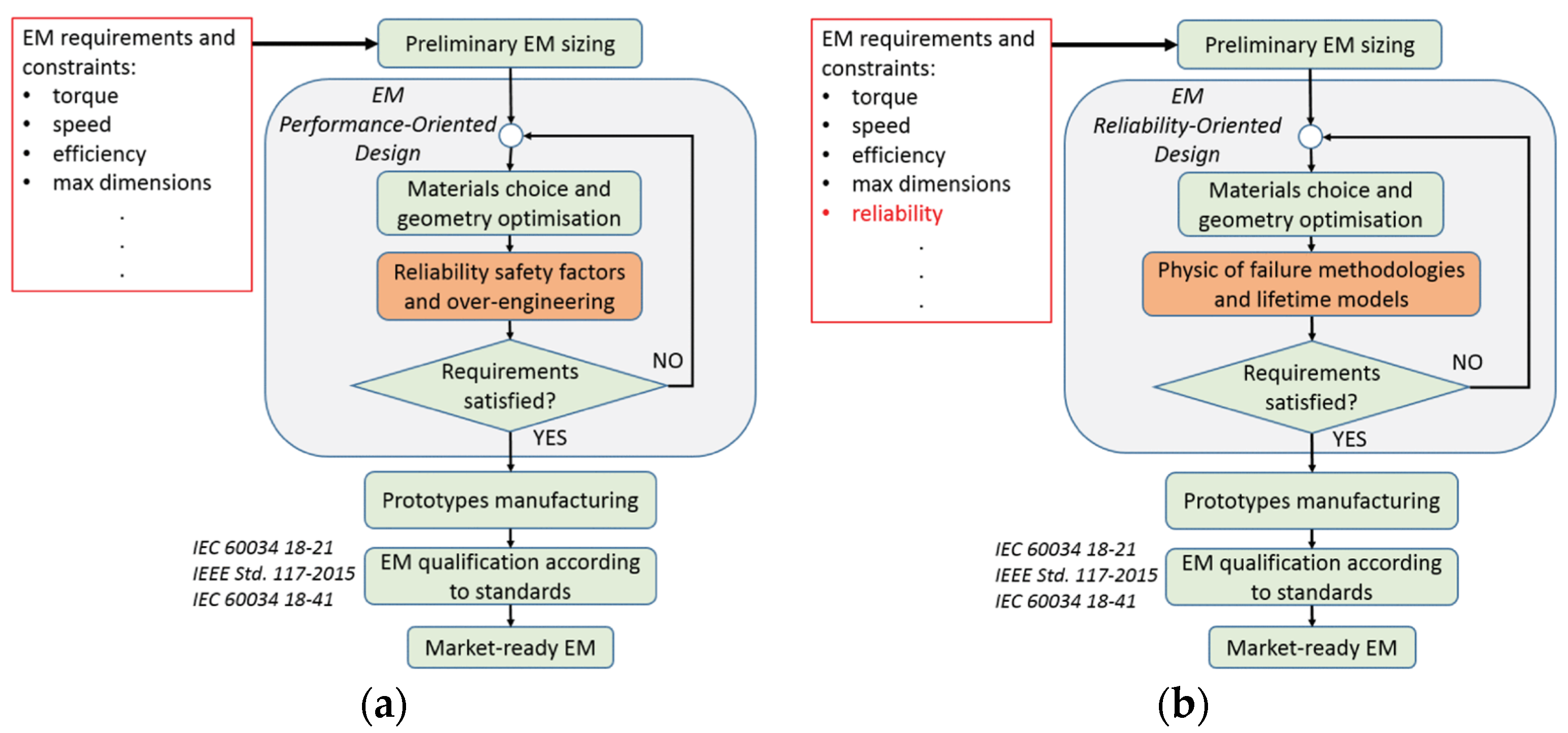

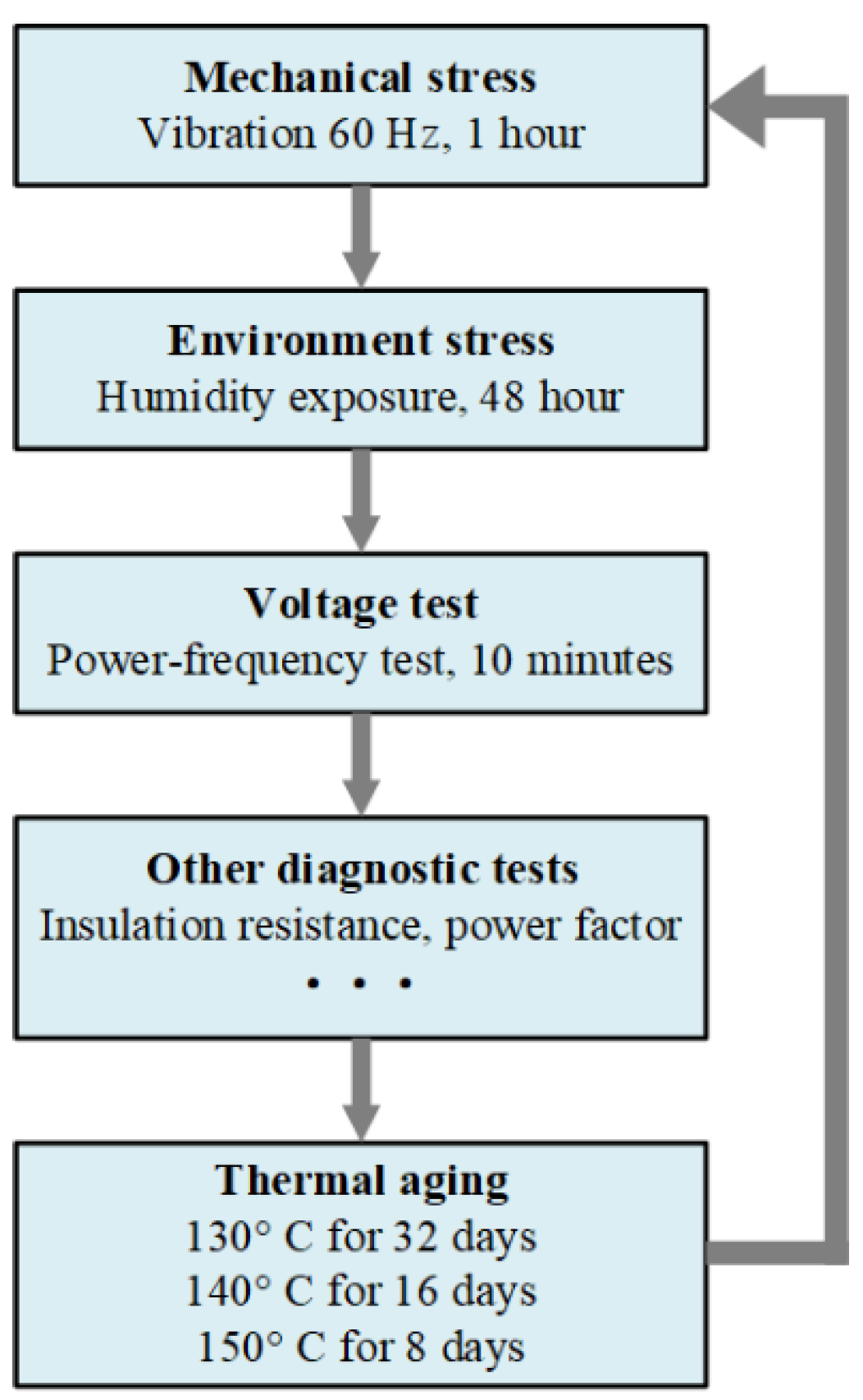
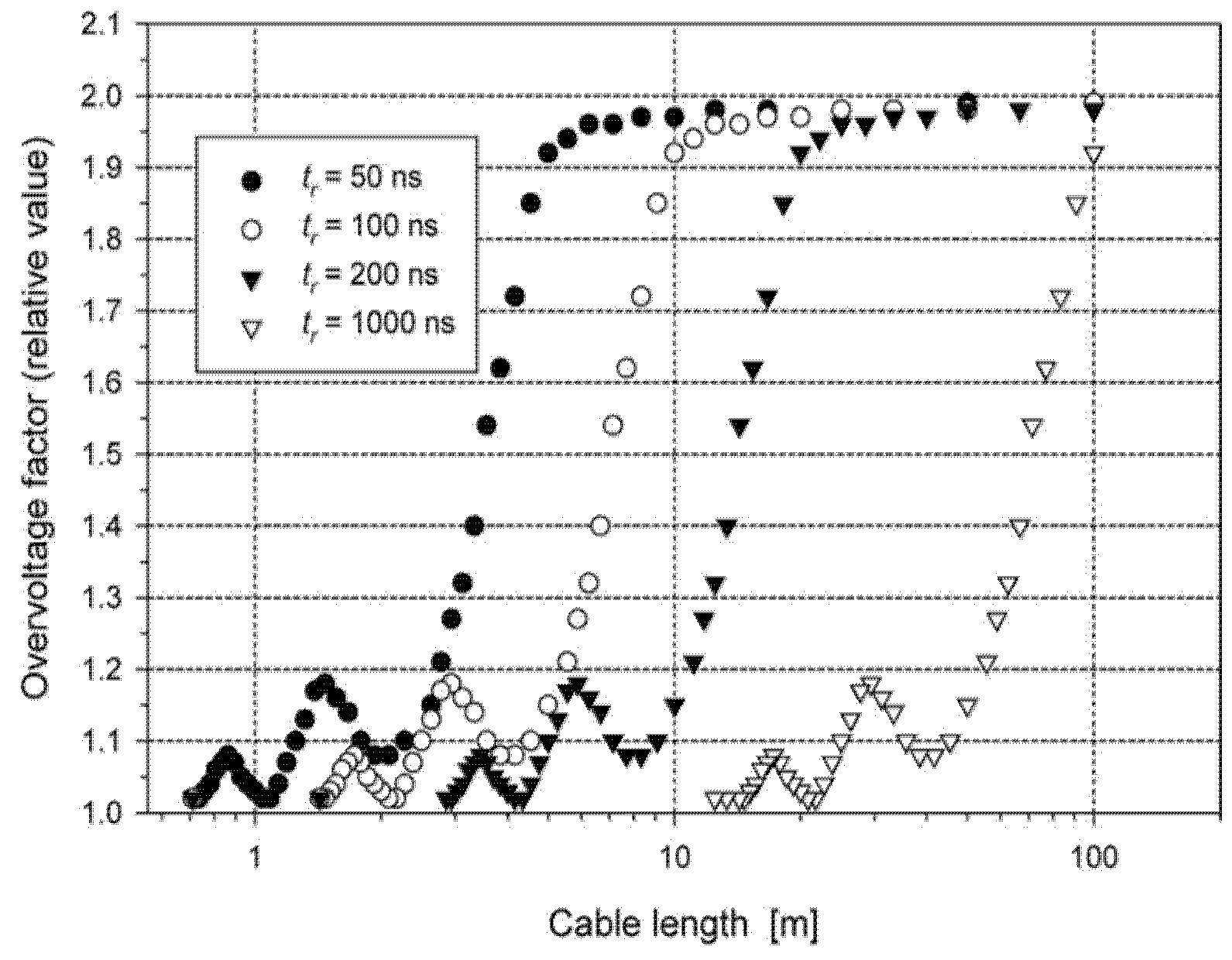
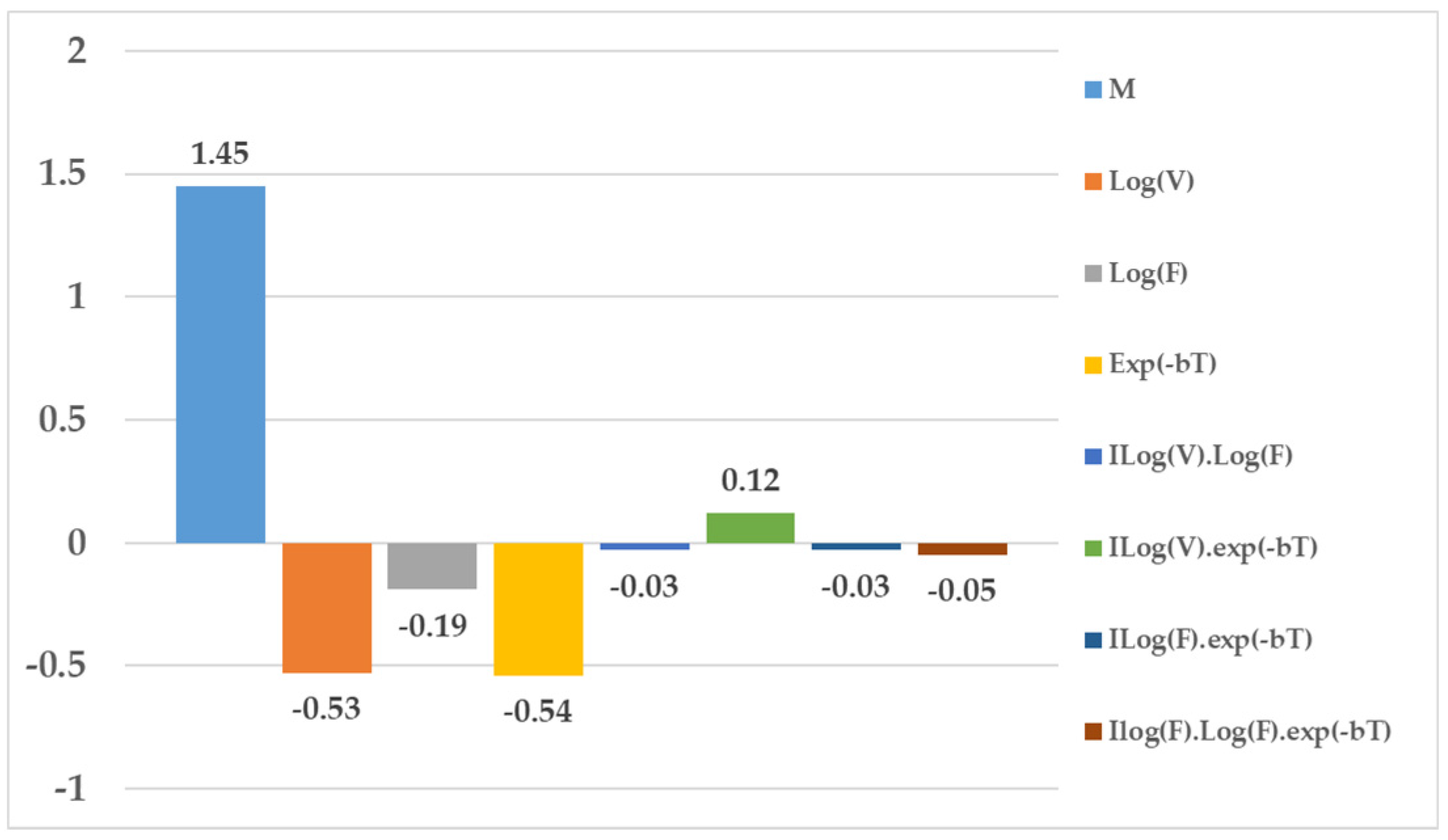

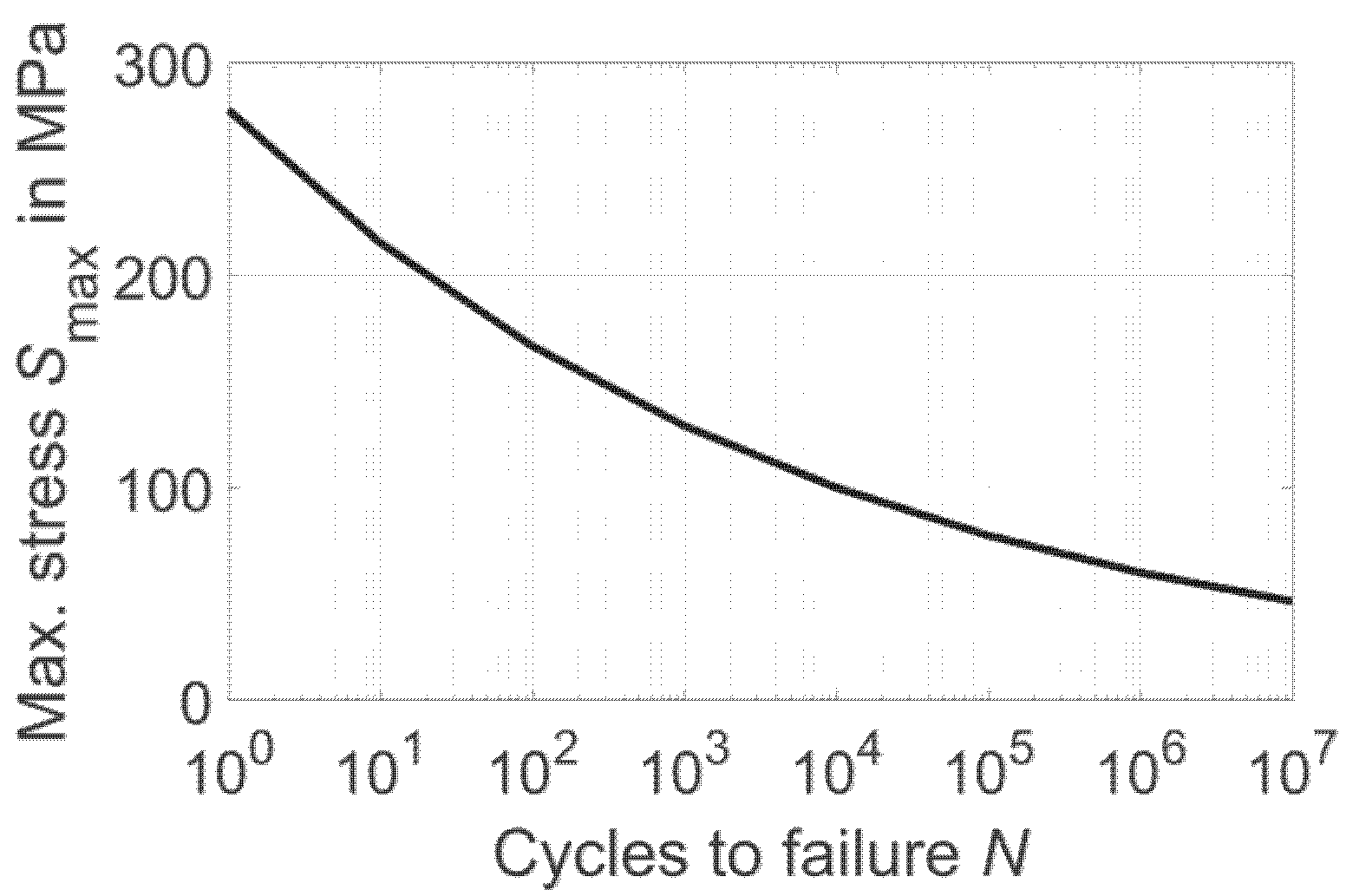
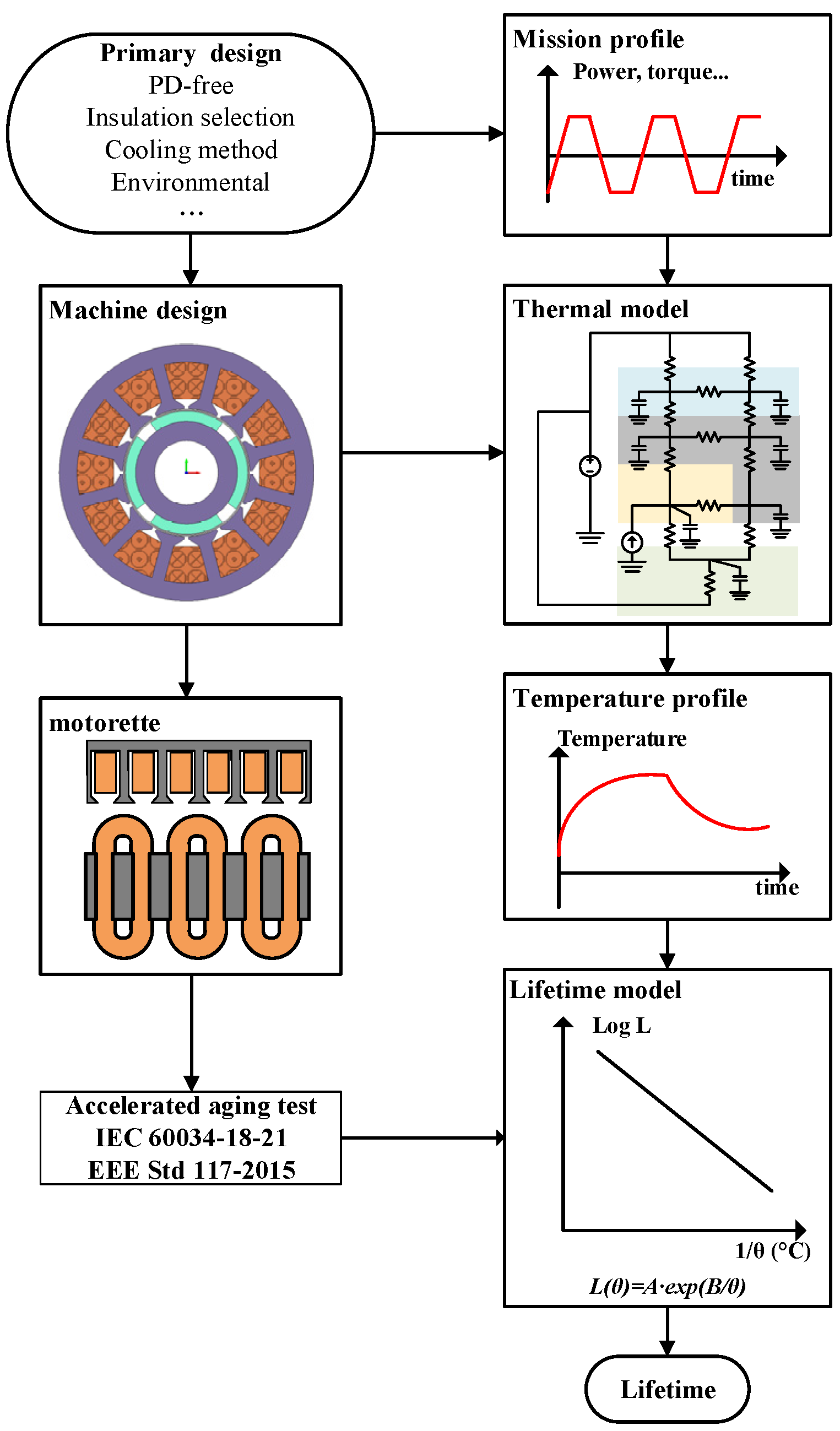

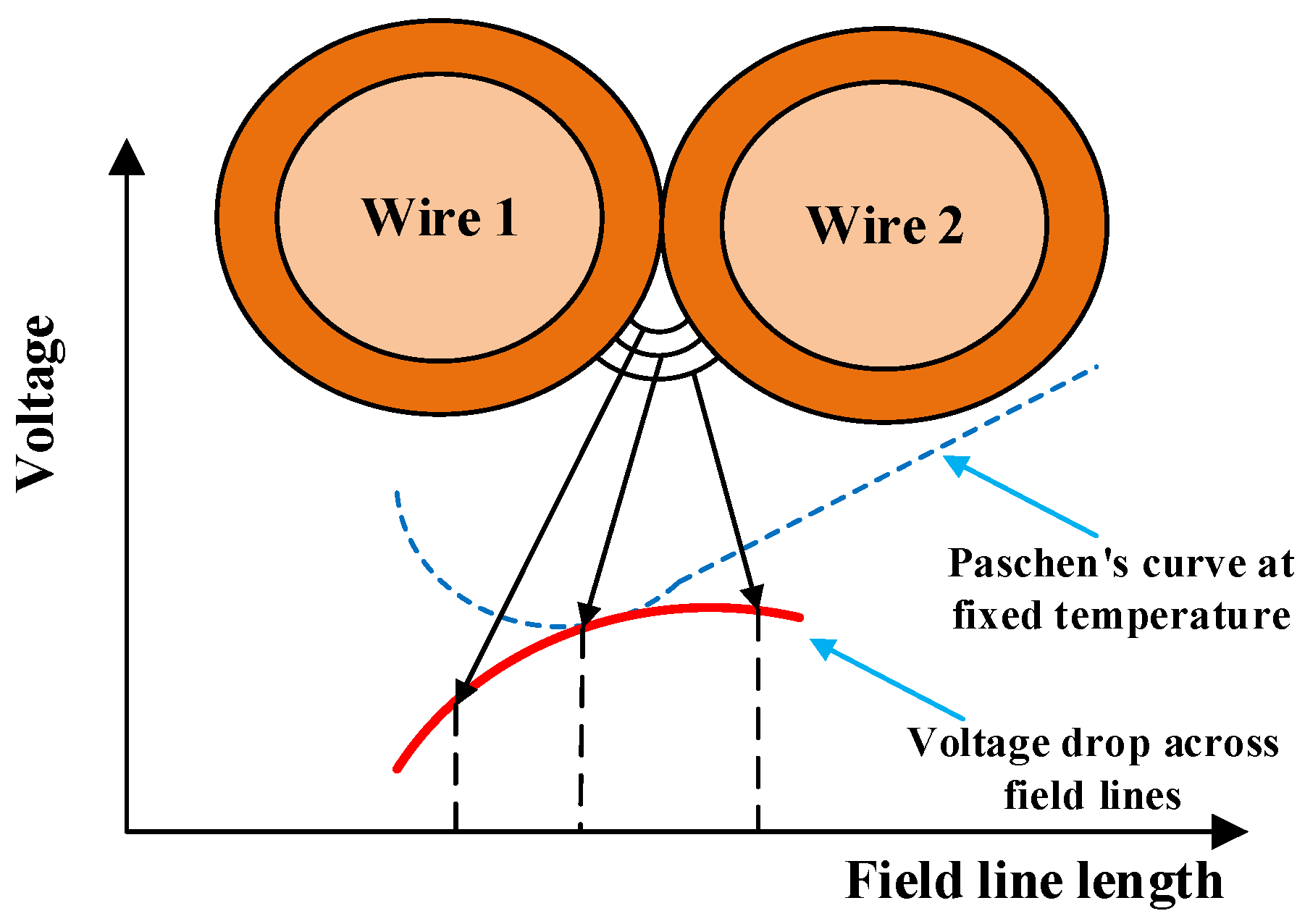




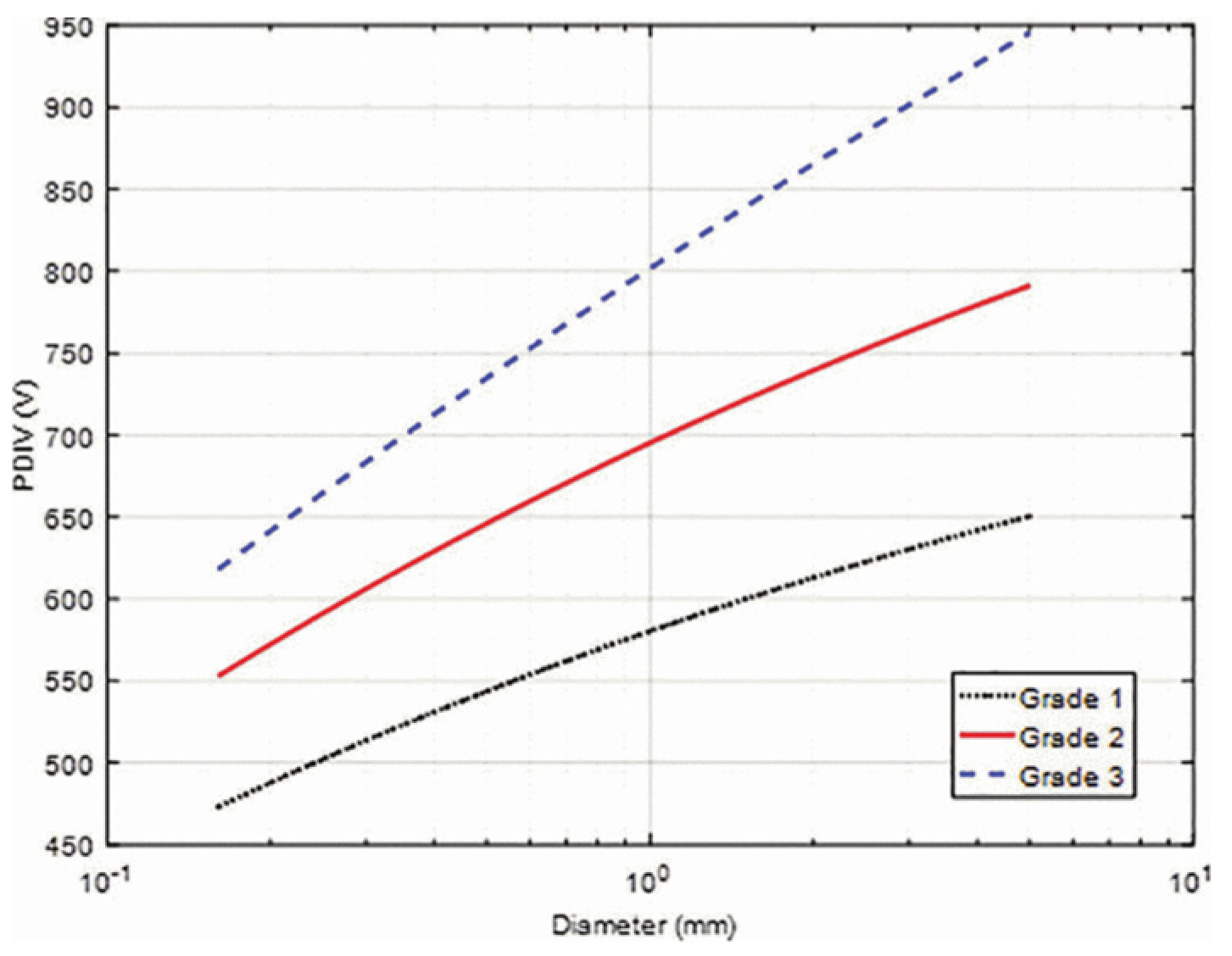
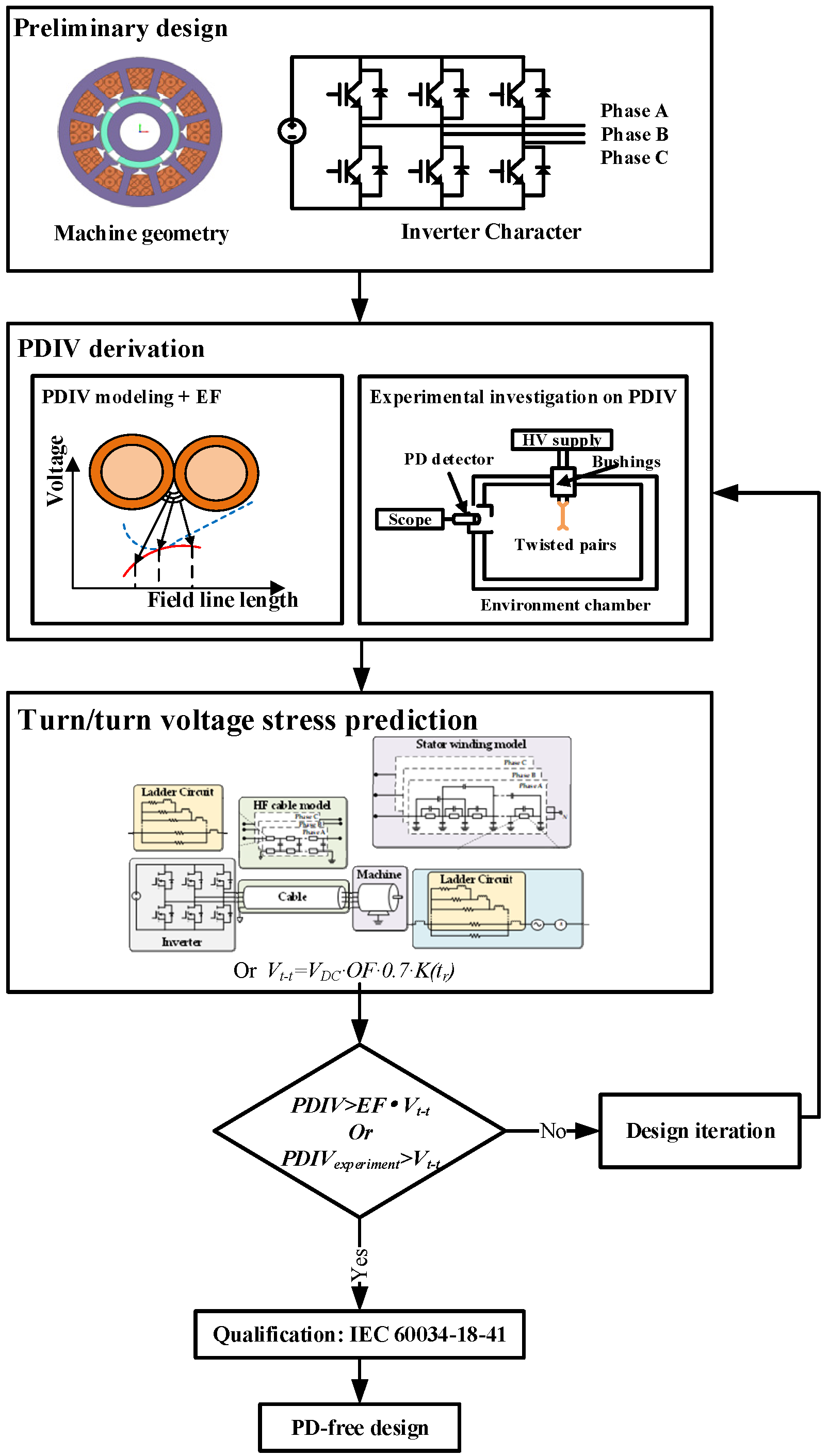
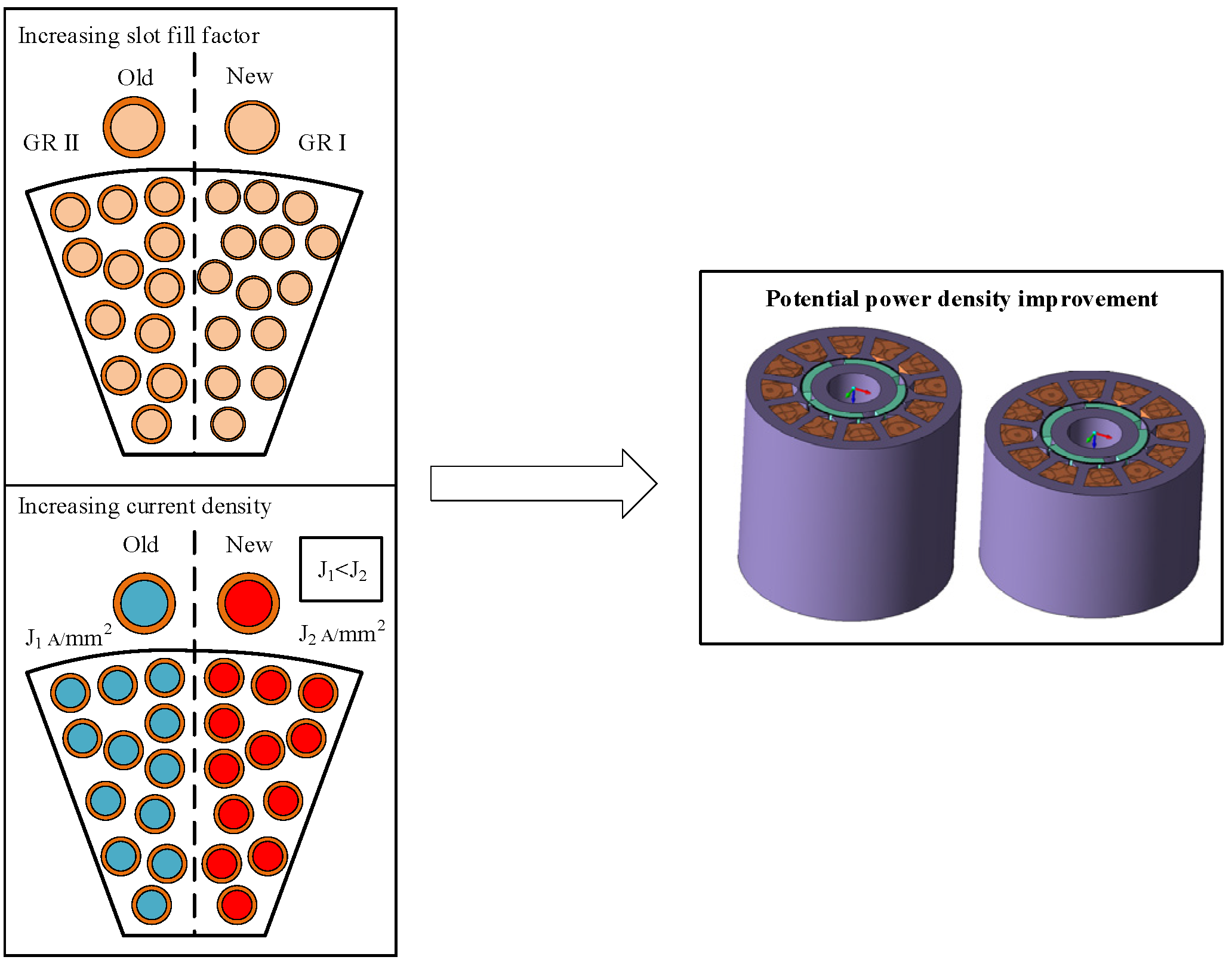
Publisher’s Note: MDPI stays neutral with regard to jurisdictional claims in published maps and institutional affiliations. |
© 2021 by the authors. Licensee MDPI, Basel, Switzerland. This article is an open access article distributed under the terms and conditions of the Creative Commons Attribution (CC BY) license (https://creativecommons.org/licenses/by/4.0/).
Share and Cite
Ji, Y.; Giangrande, P.; Madonna, V.; Zhao, W.; Galea, M. Reliability-Oriented Design of Inverter-Fed Low-Voltage Electrical Machines: Potential Solutions. Energies 2021, 14, 4144. https://doi.org/10.3390/en14144144
Ji Y, Giangrande P, Madonna V, Zhao W, Galea M. Reliability-Oriented Design of Inverter-Fed Low-Voltage Electrical Machines: Potential Solutions. Energies. 2021; 14(14):4144. https://doi.org/10.3390/en14144144
Chicago/Turabian StyleJi, Yatai, Paolo Giangrande, Vincenzo Madonna, Weiduo Zhao, and Michael Galea. 2021. "Reliability-Oriented Design of Inverter-Fed Low-Voltage Electrical Machines: Potential Solutions" Energies 14, no. 14: 4144. https://doi.org/10.3390/en14144144
APA StyleJi, Y., Giangrande, P., Madonna, V., Zhao, W., & Galea, M. (2021). Reliability-Oriented Design of Inverter-Fed Low-Voltage Electrical Machines: Potential Solutions. Energies, 14(14), 4144. https://doi.org/10.3390/en14144144





